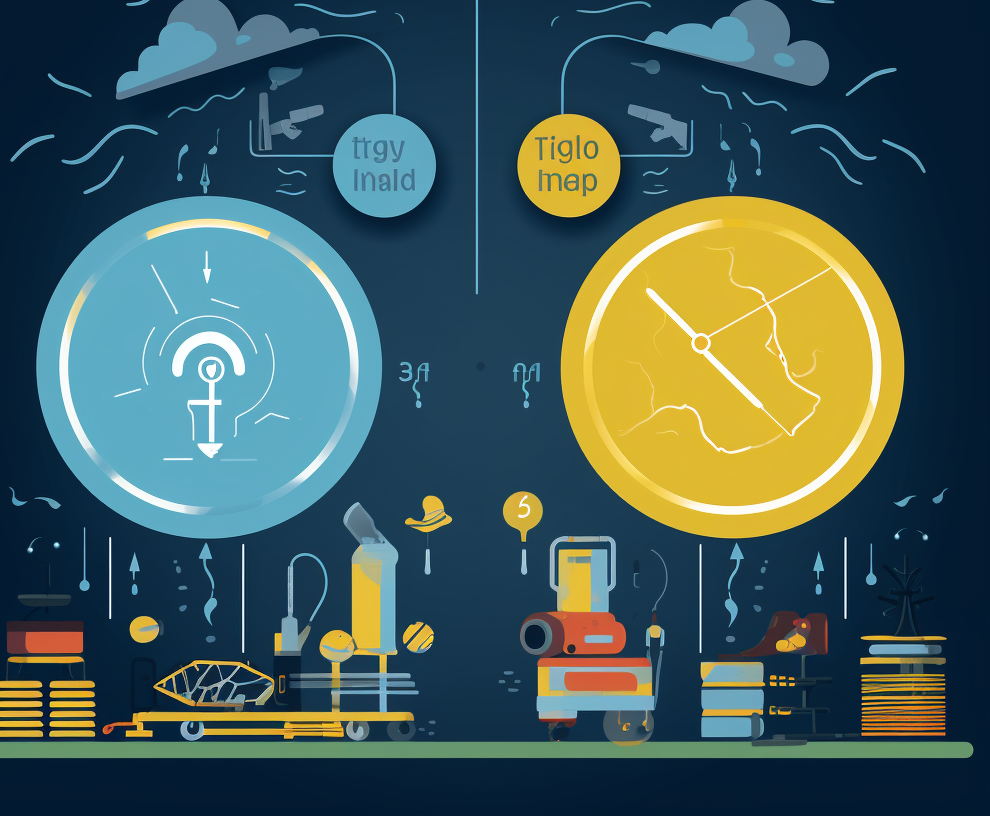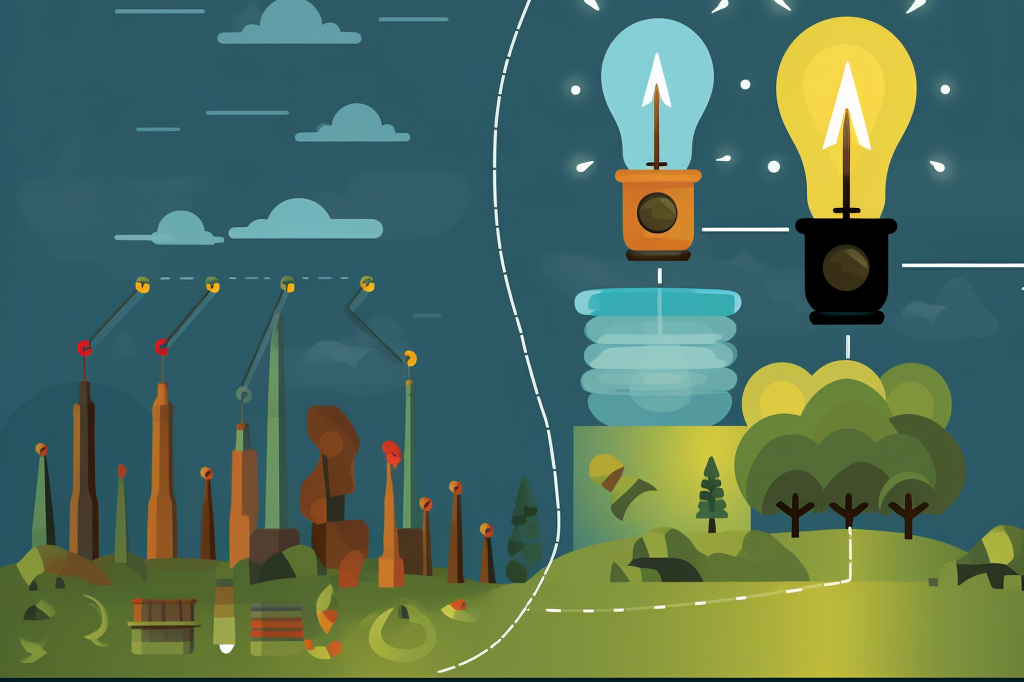Contents
When it comes to discussing energy and power systems, two terms are often used interchangeably yet incorrectly: capacity and energy. They serve as the backbone of many industries and sectors, from electrical grids and transportation to renewable energy solutions. A clear understanding of these terms is essential for stakeholders, policymakers, engineers, and even everyday consumers. It’s not just a matter of semantics; the difference between capacity and energy can significantly impact economic strategies, sustainability goals, and our collective approach to resource management.
Understanding the distinction is crucial for a myriad of applications, including energy policy development, engineering design, and sustainability initiatives. Misusing these terms can lead to inefficient systems, wasted resources, and missed opportunities for innovation. In this article, we will explore these concepts in depth, illustrating how they differ and why understanding those differences is vital. Real-world examples and data will be used to further elucidate these often-confused terms.
This comprehensive guide will give you a strong foundation in understanding the key differences between capacity and energy, focusing on their definitions, applications, and implications. Whether you’re a student, a professional, or simply an interested individual, this article aims to enlighten you on a subject that holds substantial weight in our daily lives and future planning.
The Basics of Energy and Capacity
Definitions
Capacity
Capacity refers to the maximum output or storage potential of a system or component. It sets the upper limit for what a system can handle, whether we’re discussing electrical grids, batteries, or transportation networks. Capacity is like the size of a bucket: it tells you how much it can hold, but not how much is in it at any given moment.
Energy
Energy, on the other hand, is the ability to do work or produce change. It is the “stuff” that gets consumed or transformed to accomplish a task. Unlike capacity, energy has a dynamic quality. It gets used up, replenished, and converted from one form to another. Energy is what fills the “bucket” described by capacity.
Units of Measurement
Understanding these terms also involves getting a grip on their units of measurement, as these can help reinforce the distinction.
- Capacity: Measured in various units, depending on the context. For electrical systems, it’s often in megawatts (MW) or gigawatts (GW). For storage systems like batteries, it might be measured in megawatt-hours (MWh) or even simpler units like liters or gallons for liquid storage.
- Energy: Commonly measured in joules (J) or calories in a scientific context. However, kilowatt-hours (kWh) are used in the context of electricity consumption, and British Thermal Units (BTUs) are used for heating systems.
Key Takeaways
- Capacity sets the limits; energy operates within those limits.
- Capacity is static; energy is dynamic.
- Units of measurement for each are distinct and context-dependent.
Understanding the basics of capacity and energy is vital for grasping their applications and implications, which we’ll delve into in subsequent chapters. The stakes are high: correct terminology can lead to more efficient systems and better resource management, impacting everything from your energy bill to national infrastructure.

Capacity in Context
Electrical Systems
In the realm of electrical systems, capacity is often discussed in terms of generation and distribution. For instance, a power plant might have a capacity of 500 MW, meaning it can produce up to 500 MW of electricity at its peak performance. This sets the upper boundary for the electrical output of the plant.
Storage Systems
When we talk about storage systems such as batteries, capacity defines how much energy can be stored for future use. For example, a car battery might have a capacity of 40 ampere-hours (Ah), indicating the maximum electrical charge it can hold. This is crucial in renewable energy systems where intermittent energy sources like wind or solar need backup storage options.
Transportation
In the field of transportation, capacity often refers to how much cargo or how many passengers a vehicle like a train, plane, or ship can handle. Overloading can lead to inefficiencies or even system failures. Capacity is also considered in terms of infrastructure—think road networks or railway systems—and how much they can accommodate before congestion occurs.
Key Takeaways
- In electrical systems, capacity sets the limit for generation and distribution.
- Storage systems use capacity to indicate how much energy can be stored for future consumption.
- In transportation, capacity defines the upper limits of cargo or passenger load and is integral to infrastructure planning.
Understanding capacity within different contexts allows us to manage systems more efficiently and make more informed decisions. It also forms the groundwork for the development of better technologies and policies that can lead to more sustainable practices.
Energy in Context
Types of Energy
Energy exists in various forms, each with its unique characteristics and applications. There’s kinetic energy, found in moving objects; potential energy, stored in objects based on their position or condition; thermal energy, linked to temperature; and so forth. These diverse forms make energy versatile, but they also demand nuanced understanding and management.
Energy Consumption
In the everyday context, energy consumption often refers to how much electricity, gas, or fuel is used over a period. For example, an average U.S. household uses approximately 877 kWh per month, as per the U.S. Energy Information Administration’s data. This consumption varies based on numerous factors such as location, lifestyle, and the efficiency of electrical appliances used.
Energy Transformation
A critical aspect of energy is its ability to be converted from one form to another. For instance, the mechanical energy from wind can be transformed into electrical energy through wind turbines. Similarly, the chemical energy in a battery gets converted into electrical energy to power devices. Understanding these transformations is vital for developing efficient systems and solutions.
Key Takeaways
- Energy exists in multiple forms, each with specific applications and characteristics.
- Energy consumption is a dynamic metric, influenced by various factors and often measured over time.
- Energy’s ability to transform makes it adaptable but also requires precise management to minimize losses.
Recognizing the different types of energy, how they’re consumed, and how they can transform is crucial for both individuals and industries. This awareness leads to more efficient use of resources and paves the way for innovations in sustainable energy solutions.

The Key Differences Between Capacity and Energy
Scalability
One of the primary differences between capacity and energy lies in scalability. Capacity is a fixed limit, often requiring substantial investment to increase. Whether it’s a new power plant or an expanded railway system, increasing capacity usually entails long-term planning and significant resources. On the other hand, energy usage can be scaled up or down relatively easily to meet immediate needs without necessarily changing the capacity.
Time Factor
Another crucial difference is the time element. Capacity is a static measure at a specific moment, but energy involves the passage of time. For example, a power plant might have a capacity of 500 MW but could be generating just 300 MW at noon and 450 MW in the evening. This fluctuation is an aspect of energy, not capacity.
Versatility
Capacity is generally specialized. A natural gas plant can’t suddenly switch to solar energy; a cargo ship designed for heavy goods can’t easily be repurposed for passenger transport. Energy is more versatile, able to transform from one type to another. This adaptability allows for a broader range of applications and innovations.
Key Takeaways
- Scalability: Capacity is more rigid and long-term, while energy is flexible and adaptable to immediate needs.
- Time Factor: Capacity is a static snapshot, whereas energy is dynamic and changes over time.
- Versatility: Capacity is specialized, whereas energy is adaptable and can transform from one form to another.
Understanding these key differences helps us make informed decisions in various sectors, from energy production and distribution to transportation and beyond. It allows stakeholders to allocate resources more effectively, develop better technologies, and create policies that are both economically and environmentally sustainable.
Practical Applications and Implications
Renewable Energy
In the context of renewable energy, understanding the difference between capacity and energy is vital. A solar farm may have a high capacity during peak sunlight hours, but what about cloudy days or nighttime? Here, energy storage technologies like batteries come into play, storing excess energy generated during high-capacity times for use when actual energy production is low.
Energy Storage
Advancements in energy storage technologies, particularly batteries, emphasize the importance of capacity. For instance, Tesla’s Gigafactory aims to reach an annual battery production capacity of 500,000 cars. But these batteries are not just about capacity; they also focus on efficient energy output, allowing for longer driving ranges and quicker charging times.
Infrastructure Planning
When it comes to infrastructure, like roads or electrical grids, planners need to consider both capacity and energy. While the capacity of a road might be defined by its width and the number of lanes, the energy relates to the flow of traffic, the speed of vehicles, and the density during peak hours. Understanding both aspects helps in creating systems that are robust, efficient, and adaptable.
Key Takeaways
- Renewable Energy: Capacity and energy considerations are fundamental to the effectiveness of renewable energy systems, impacting both production and storage.
- Energy Storage: The evolution of storage technologies focuses on balancing capacity and energy output, key for applications like electric vehicles.
- Infrastructure Planning: Effective planning requires a nuanced understanding of both the capacity of systems and the energy they will handle over time.
The practical applications and implications of understanding capacity versus energy are vast, impacting various sectors from energy to transportation. Knowing the distinction enables smarter resource allocation, promotes sustainability, and sparks innovation.

Myths and Misconceptions
“More Capacity Always Equals More Energy”
One common misconception is that a system with higher capacity will necessarily produce or use more energy. While capacity sets the upper limit, it doesn’t guarantee that a system will operate at full tilt all the time. For example, a power plant with a capacity of 1 GW won’t always produce 1 GW of energy. Various factors, like demand fluctuations and maintenance schedules, influence the actual energy output.
“Capacity and Energy are Interchangeable”
Another myth is that the terms capacity and energy can be used interchangeably. As we’ve established, capacity is a static measure, whereas energy is dynamic. Misusing these terms can result in imprecise calculations, skewed planning, and even policy errors.
“Renewable Energy Sources Have Low Capacity”
There’s a misconception that renewable energy sources like wind and solar have low capacity. While it’s true they can be intermittent, advancements in energy storage technologies are increasingly allowing these sources to store excess energy, effectively increasing their functional capacity over time.
Key Takeaways
- More capacity doesn’t necessarily mean more energy will be produced or consumed.
- Capacity and energy are fundamentally different concepts and should not be used interchangeably.
- Renewable energy sources are increasingly capable of effective energy storage, which elevates their functional capacity.
Debunking these myths is essential for accurate understanding and effective decision-making in various sectors. Misunderstandings can lead to poor policy decisions, inefficient resource allocation, and even public confusion.
Conclusion
The Significance of Understanding Capacity vs. Energy
Understanding the distinction between capacity and energy is not just academic; it has real-world implications that affect various industries, policies, and even daily life. From the sustainable management of resources to the effective planning of infrastructure, the terms guide decision-making processes that have far-reaching impacts.
Summary of Key Points
- Capacity sets the upper limit, while energy is the actual usage or production within those limits.
- Capacity is a static snapshot, whereas energy is dynamic and fluctuates over time.
- Capacity is often specialized and less flexible, whereas energy is versatile and can change forms.
- Myths and misconceptions can lead to poor decisions and inefficiencies, making it crucial to understand these terms accurately.
Final Thoughts
As our world grapples with challenges like climate change, population growth, and technological advancements, the importance of understanding the nuance between capacity and energy only grows. Informed individuals and organizations can make better choices, fostering more sustainable and efficient systems for the future.
Thank you for joining us on this deep dive into the differences between capacity and energy. We hope this comprehensive guide has illuminated these complex topics, allowing you to better understand and apply this knowledge in various contexts.


